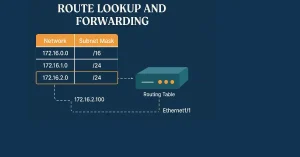Best Route, Routing Table Terms, and Lookup Process (Updated 2025)
The best route is the longest match route to the destination IP address. The route lookup process matches the destination IP address with the available routes in the routing table and selects the longest-matched route as the forwarding route. To match the destination IPv4 address of a packet with the routes in the routing table, […]

